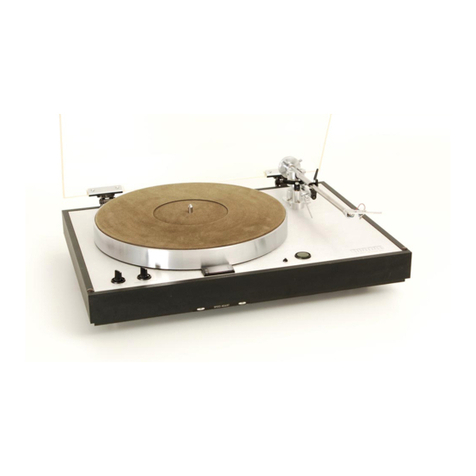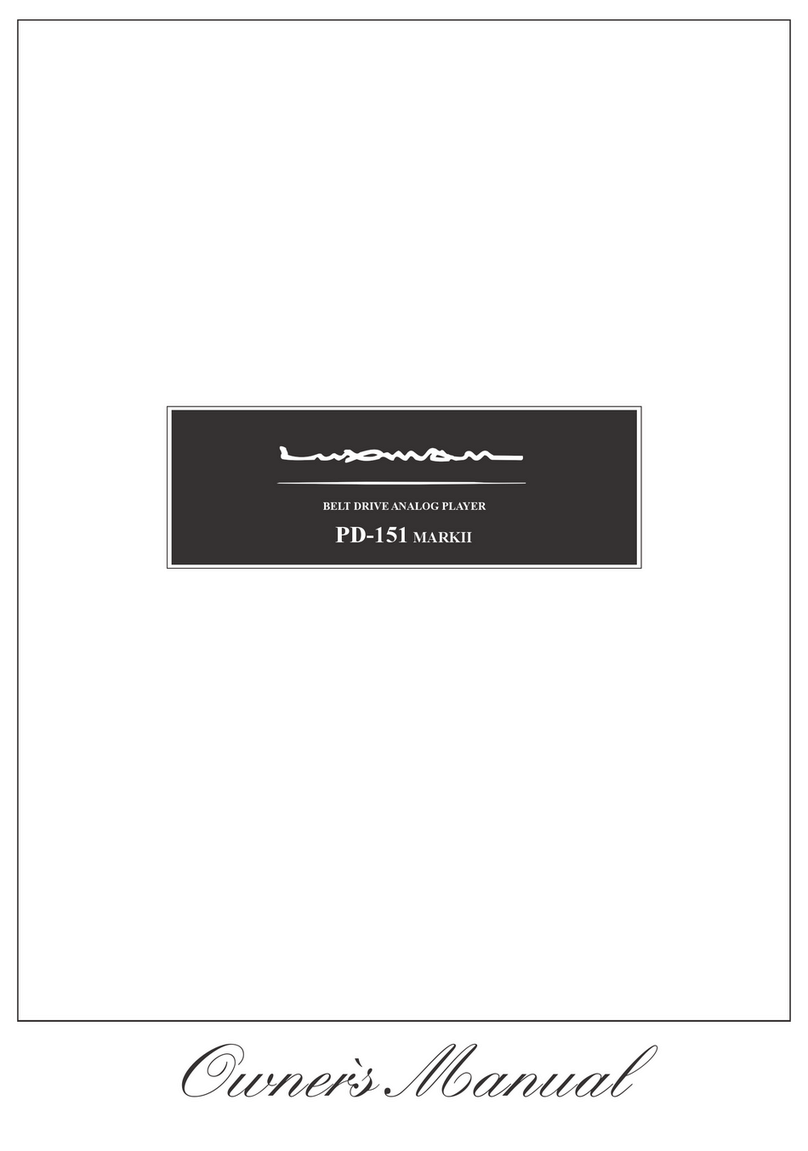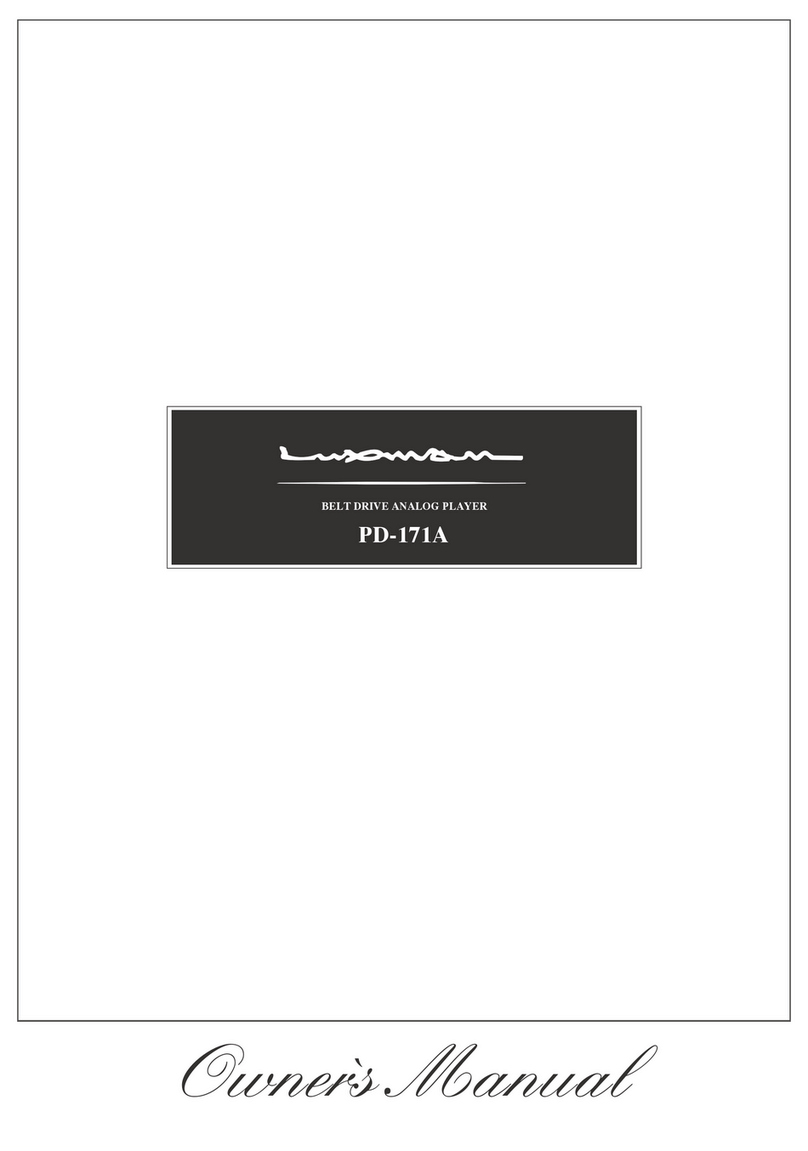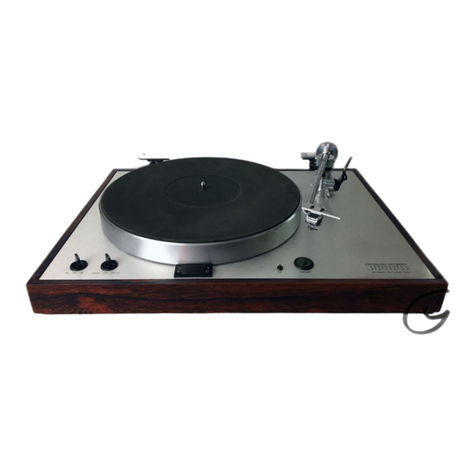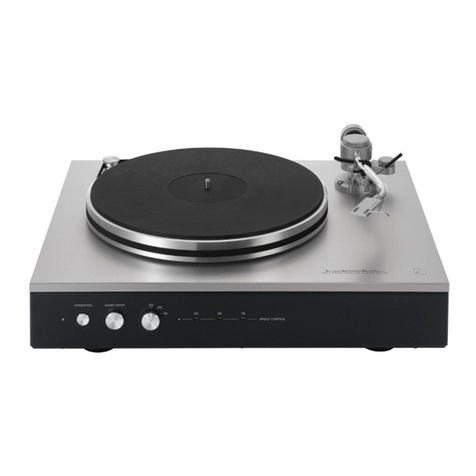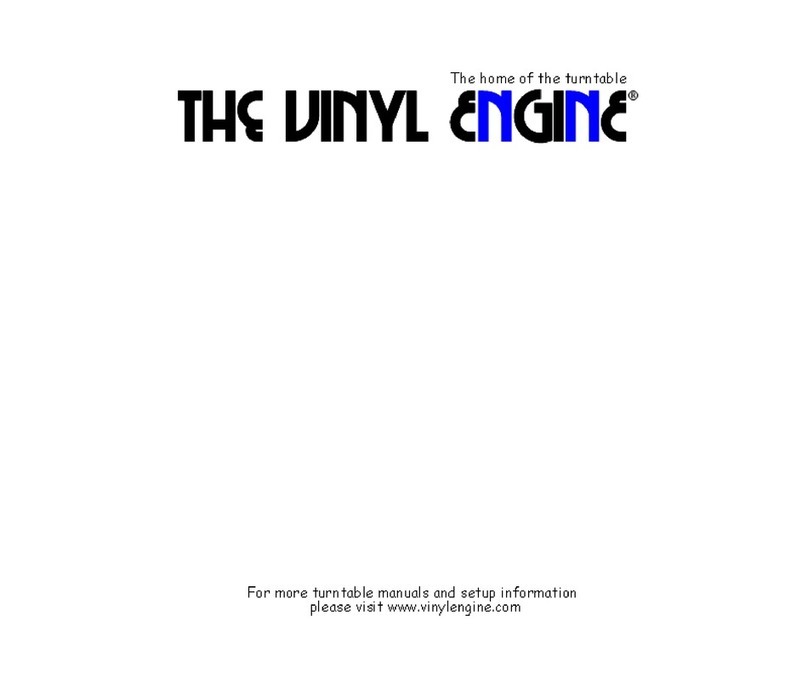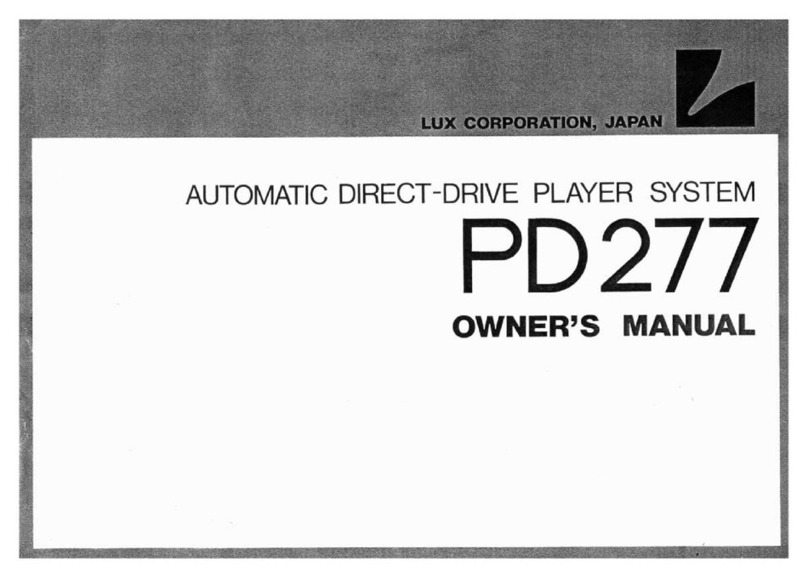
BELT DRIVE ANALOG PLAYER PD-191A
1
Precautions
Installation location
Install this unit in a location where good ventilation and heat
radiation are assured.
Especially, installation of this unit where direct sunlight is
present, where the temperature rises excessively high such
as close to a heater, or where it is humid or dusty may cause
a malfunction even if heat is efficiently released.
Therefore, do not install this unit in such places.
Note:
For heat dispersal, do not install this equipment in a confined
space such as a book case or similar unit.
*
Note
Wall
*
**
• Choose a stable place near the stereo system that is to be
used in combination with this unit.
• Do not install this unit near a television or color monitor.
• Keep this unit away from magnetically sensitive devices
such as cassette decks.
• Install this unit on a level surface.
DO NOT move this unit during playback.
Moving this unit during playback may cause needle jump, and
damage the needle and record thereby.
When moving this unit
For moving this unit, be sure to turn off the power after stop-
ping the platter and removing the record. Next, unplug the
power and phono cables and remove the platter and rubber
mat before moving.
Avoid the following locations for installation.
• Locations exposed to direct sunlight
• Locations subject to humidity and which lack ventilation
• Locations that are extremely hot or cold
• Locations which experience strong vibration
• Dusty locations
• Locations subject to oil, steam, and heat (such as kitchens)
Do not put articles.
Do not put articles on this unit.
Avoid sources of heat
Do not place this unit on top of any device as an amplifier that
may emit heat. If the unit is installed on a rack, install the unit
as distantly as possible from where the amplifier is installed so
as to avoid heat emission from the amplifier and other audio
devices.
Condensation
Be aware that condensation may occur when this unit is
moved from a cold place to a warm place especially in win-
ter or when the temperature of the room where this unit is
installed is quickly raised with a heater or the like. It depends
on the condensation state, however, this unit can be used af-
ter disappearance of water droplets by turning on the power
and leaving the unit as it is for 1 to 2 hours to keep the unit at
room temperature.
Condensation can occur even in summer if this unit is directly
exposed to cool air from an air conditioner. In such a case,
the installation location should be changed.
Lubrication
Do not lubricate this unit yourself because special oil is used
for the spindle.
Cleaning
• Usually, wipe the unit with a dry soft cloth.
When the dirt is hard to remove, dip soft cloth in detergent
diluted 5 or 6 times with water, wring it well, and remove
contaminants. Then, remove the moisture with dry cloth.
• Be aware that printed or painted portions may be damaged
if the portions come into contact with alcohol, thinner, ben-
zine, insecticide, or the like. In addition, do not let this unit
contact a rubber or plastic foam for a long time. That may
damage the cabinet surface of the unit.
• Be sure to unplug the power cable from the outlet before
cleaning.
Repair and adjustment
When repair and adjustments are needed, please ask the
dealer where you bought the unit.
Safety cautions
Caution
• Exercise extra care when this unit is unpacked, assembled,
transported, and installed because this unit is heavy.
